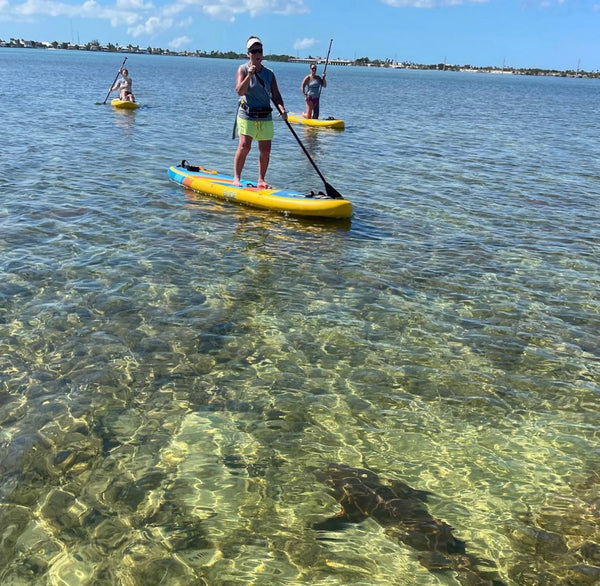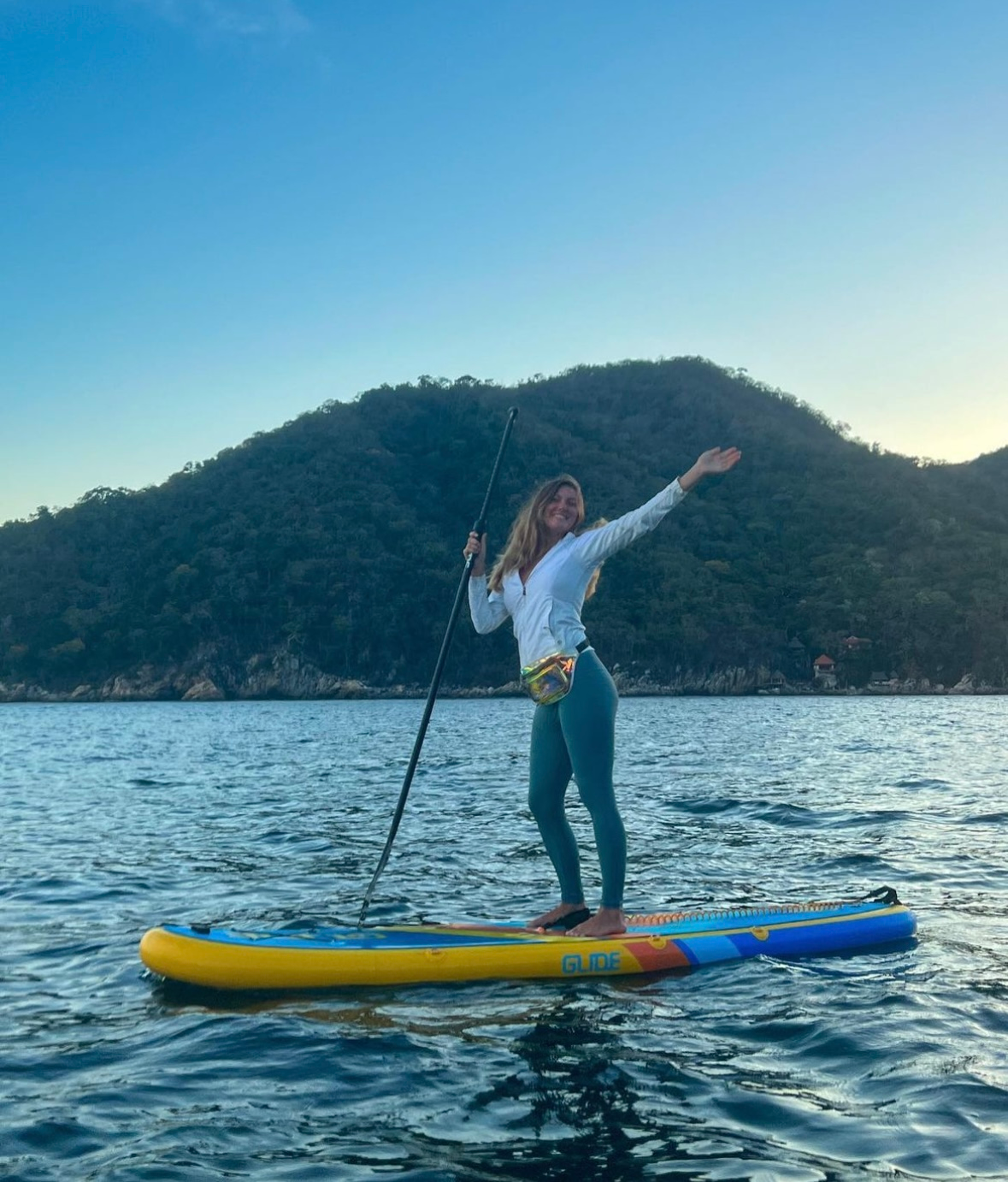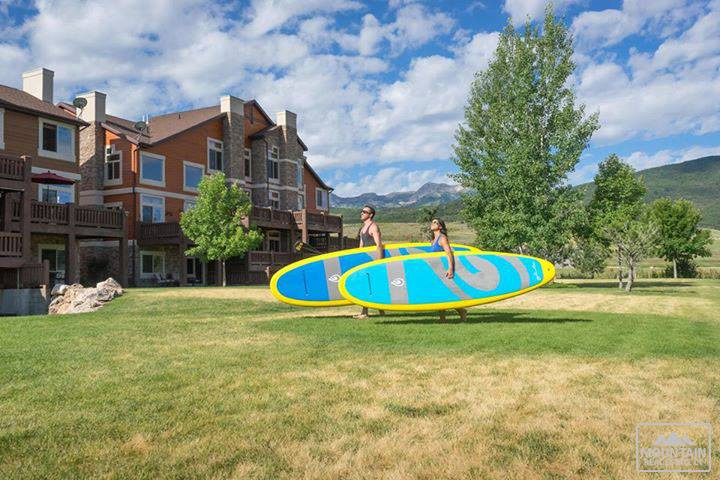
The Role of Weather and Tides in Paddle Boarding: A Comprehensive Guide
Paddle boarding is a popular water sport that continues to grow in popularity due to its accessibility and versatility 1. However, it's essential to understand how weather and tides can impact your experience on a stand up paddle board. In this comprehensive guide, we'll discuss the role of weather and tides in paddling paddles boards and how to navigate these conditions to have a safe and enjoyable time on the water.
Key Highlights
-
Impact of Wind on Paddle Boarding: Wind direction and strength significantly affect your paddling experience. Beginners should seek calm conditions, while experienced paddlers can handle moderate winds. Hard boards perform better in wind due to their lower profile.
-
Temperature Considerations: Dress appropriately for air and water temperatures to ensure comfort and safety. A wetsuit or drysuit may be necessary in colder conditions.
-
Effects of Precipitation: Rain can reduce visibility and make conditions more challenging. Light rain is manageable, but always consider the potential for hypothermia in colder weather.
-
Understanding Tidal Movement: Tides influence water levels, currents, and access to certain areas. Familiarize yourself with local tide patterns to plan your route effectively.
-
Navigating Tidal Areas: Be mindful of strong currents, shifting sandbars, and underwater obstacles. Wear a PFD and use a leash for safety.
-
Tips for Different Conditions: Adjust your paddle technique in windy conditions, dress properly for cold weather, protect yourself from the sun in warm weather, and understand how to safely navigate tidal currents.
-
Essential Safety Equipment: Always wear a PFD, use a leash to stay connected to your board, and carry emergency equipment like a whistle and flashlight.
Understanding Weather Conditions

Wind
Wind is a significant factor to consider when planning your outing on a paddle board 2. Wind direction and strength can impact the difficulty of paddling and may influence your route. Beginners should start in calm conditions, while more experienced paddle boarders may be able to handle light to moderate winds. Keep in mind that paddling into a headwind will require more effort and can be tiring, while paddling downwind will generally be easier.
Hard paddle boards tend to perform better than inflatable paddle boards in windy conditions due to their lower profile. You will notice the difference when you paddle forward into the wind.
Temperature
Both air and water temperature can affect your experience on a hard or inflatable paddle board. When dressing for paddle boarding, consider wearing a wetsuit or drysuit in colder conditions, and lighter, quick-drying clothing in warmer conditions 3. Be prepared with appropriate paddle board equipment and always check the weather forecast before heading out.
Precipitation
Rain and other forms of precipitation can impact visibility and make paddle boarding more challenging. Although it's possible to stand up paddle board in light rain, it's essential to consider the impact of reduced visibility and the potential for hypothermia in colder conditions 4.
Navigating Tides
Understanding Tidal Movement
Tides are the periodic rise and fall of water levels in oceans, seas, and other large bodies of water. They are caused by the gravitational forces exerted by the moon and the sun on the Earth 5. Tides can have a significant impact on your paddle boarding experience, affecting the depth of water, the strength and direction of currents, and the accessibility of certain areas.
Planning Your Route
Before setting out on your stand up paddle board adventure, it's crucial to understand the local tide patterns and how they will affect your route. You can find tide information from local resources, such as marinas or online resources, to help plan your route accordingly 6.
Safety Considerations
When paddle boarding in tidal areas, it's essential to be aware of potential hazards, such as strong currents, shifting sandbars, and underwater obstacles. Make sure to wear a personal flotation device (PFD) and use a paddle board leash to stay safe 7.
Tips for Paddle Boarding in Different Weather and Tidal Conditions

Staying Safe in Windy Conditions
In windy conditions, it's essential to adjust your paddle technique to maintain control and stability. Keep a low center of gravity by keeping your knees slightly bent and leaning into the wind 8. When you paddle forward into a headwind, take shorter, more frequent strokes to maintain momentum.
Paddle Boarding in Cold Weather
In colder conditions, it's crucial to dress appropriately and be prepared for the risk of falling into cold water. Wearing a wetsuit or drysuit can help keep you warm and protect you from hypothermia 9. Additionally, always let someone know your planned route and estimated return time before heading out in cold weather.
Paddle Boarding in Warm Weather
Warm weather can be ideal for paddle boarding, but it's essential to protect yourself from the sun and stay hydrated. Wear sunscreen, a hat, and sunglasses to shield yourself from UV rays 10. Bring plenty of water and take breaks in the shade when needed.
Navigating Tidal Currents
When paddling in areas with strong tidal currents, it's essential to understand how to navigate these conditions safely. Plan your route to take advantage of the tide, paddling with the current when possible 11. Be aware of the potential for rip currents and how to escape them by paddling parallel to the shore until the current subsides.
Importance of Safety Equipment and Precautions
Personal Flotation Devices (PFDs)
Wearing a personal flotation device (PFD) is a critical safety measure for paddle boarders of all skill levels 12. PFDs not only help you stay afloat in the water but can also be a lifesaver in case of emergency or unexpected weather changes. Ensure you have a properly fitting PFD and make it a habit to wear it during every paddle boarding session.
Leashes and Emergency Equipment
Using a paddle board leash can prevent your board from drifting away if you fall into the water, especially in windy or strong tidal conditions 13. Attach the leash to your ankle or calf to keep your paddle board within reach at all times. Additionally, it's essential to bring along emergency equipment such as a whistle, flashlight, and communication device to alert others in case of any unforeseen issues. Being prepared for potential challenges will make your paddle boarding experience safer and more enjoyable.
Conclusion

Weather and tides play a significant role in your stand up paddle boarding experience. Understanding how these factors affect your time on the water and adapting your techniques to accommodate them is essential for a safe and enjoyable outing. By staying informed, planning your route, and using the proper equipment, you can navigate various weather and tidal conditions with confidence.

